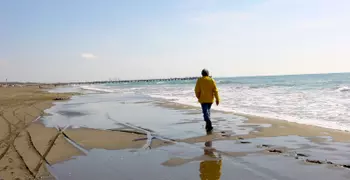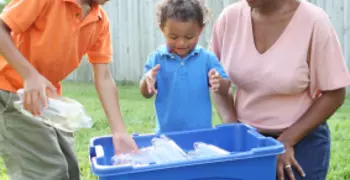How Are Food and the Environment Related?

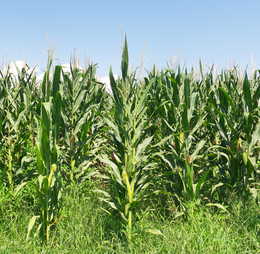 Are we killing the environment or is it killing us? When we look at what we eat and how we grow it, we find extensive evidence for damage both to our food (from pollution and soil depletion) and to our environment (from the toxicity of growing foods industrially).
Are we killing the environment or is it killing us? When we look at what we eat and how we grow it, we find extensive evidence for damage both to our food (from pollution and soil depletion) and to our environment (from the toxicity of growing foods industrially).
How does our diet impact our environment?
Americans demand cheap food, so American agricultural policy for the past 30 years has focused on providing large amounts of inexpensive calories. Two of the cheapest sources of calories are corn and soy, which the federal government has long subsidized and which make up a large percentage of our caloric intake today (often in the form of high fructose corn syrup or soybean oil). Corn is also a large part of the diet of the animals we eat.
Corn and soy are prized because they can be efficiently grown on vast farms. But growing just one crop consistently (a monoculture) depletes the soil and forces farmers to use greater amounts of pesticides and fertilizers.
The effects of pesticides and fertilizers on natural wildlife and our water supply is well-documented. Currently, the "dead zone" in the Gulf of Mexico, where no fish or other animals can live, has grown to 8,543 square miles, the size of New Jersey. This is due to chemicals in the Mississippi River, particularly fertilizers, as it flows into the Gulf.
The impact of environmental toxins
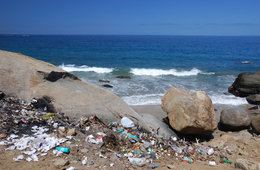 Pesticides and herbicides are environmental toxins, known as xenobiotics.
Pesticides and herbicides are environmental toxins, known as xenobiotics.
Xenobiotics include not only pesticides/herbicides, but plastics (bisphenol A), surfactants used in food packaging, household chemicals, industrial chemicals (PCBs and dioxins), and heavy metals (lead, mercury, and cadmium). These products have been shown to have a negative impact on animal health.
One group of xenobiotics is made up of environmental estrogens, referred to as xenoestrogens, which mimic animal hormones and act as endocrine system disrupters. Like other xenobiotics, they come from pesticides/herbicides and other chemicals. They are in our food, our water, and our air. Once in our body, they are not easily broken down.
Xenoestrogens have been associated with developmental issues and reproductive health problems in wild life and laboratory animals. Among the effects documented in a 2006 study of these environmental xenoestrogens are male fish that express female characteristics, turtles that are sex reversed, and male frogs with multiple ovaries. Researchers have also documented seals with an excess of uterine fibroids and salmon with enlarged thyroids.
In humans, xenoestrogens mimic the effect of human estrogens because they have a chemical structure that allows them to fit into estrogen receptor sites. But once there, they cause issues. According to a 2006 study, they can prevent normal hormone binding to hormone receptors, influence cell signaling pathways, and increase cell division.
Xenoestrogens are just one example of how pesticides and other toxins that humans use in food production are impacting our environment and our health.
How we are wasting nutrients
Increasingly, the food Americans eat comes from far away. Shipping our food long distances and processing it not only contributes to air and water pollution, but depletes the food of nutrients.
Ecologically speaking, we are squandering the nutrients taken from the soil. And we are not replacing them fully. Commercial fertilizers focus on nitrogen, phosphorus, and potassium, but provide little else, so they essentially simplify the biochemistry of the soil.
We have broken the ecological link wherein the nutrients from the soil used in growing food are consumed locally and then returned to that soil as compost and other waste.
How does the environment impact our food?
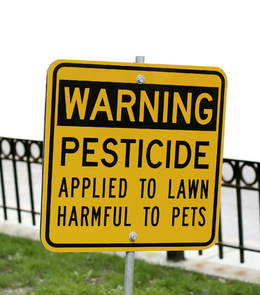 The USDA (US Department of Agriculture) has been tracking the nutritional quality of produce since the 1950s and has seen a steady decline. According to Brian Halwell, a researcher for WorldWatch, vitamin C has declined by 20 percent, iron by 15 percent, riboflavin by 38 percent, and calcium by 16 percent. So we are now getting less nutrition per calorie in our foods. In essence, we have to eat more food to get the same vitamin and mineral content.
The USDA (US Department of Agriculture) has been tracking the nutritional quality of produce since the 1950s and has seen a steady decline. According to Brian Halwell, a researcher for WorldWatch, vitamin C has declined by 20 percent, iron by 15 percent, riboflavin by 38 percent, and calcium by 16 percent. So we are now getting less nutrition per calorie in our foods. In essence, we have to eat more food to get the same vitamin and mineral content.
This is probably due to a combination of factors, including the depletion of nutrients in the soil through monoculture and the use of fertilizers, which simplify the biochemistry of the soil.
This simplification of the soil in turn makes plants more vulnerable to pests, so farmers need to use more pesticides, which introduces those chemicals in our bodies and in our air and water supply. We will look at some of the impacts on these environmental toxins in a minute.
Learn more how phytochemicals help usPlants treated with pesticides also don't produce as much of their own phytochemicals to protect themselves from pests. These plant chemicals are greatly beneficial to humans.
Note that organic foods are an exception to this discussion-they don't include contaminants and it is likely that they have more phytochemicals. (And they don't contribute to environmental pollution as much.)
Environmental toxins again
Diseases often result from a complex interaction between an individual's genetic make-up and environmental influences. Genetic makeup also determines how a person might respond to environmental xenobiotic exposure.
The functional capacity to metabolize and excrete toxins varies from person to person. This explains why some individuals have a fairly low risk of developing a disease as a result of an environmental exposure, while others are much more vulnerable. The Environmental Protection Agency's Report on Environmental Pollution and Disease indicates that the following commondiseases and conditions may be strongly linked to environmental exposure: asthma, autism, breast and other cancers, lung disease, Parkinson's disease, and conditions associated with reproductive health.
The Genes and Environment Initiative is a five-year, National Institute of Health effort to identify the genetic and environmental basis of asthma, diabetes, cancer, and other common illnesses. This initiative will support the development of new procedures for analyzing genetic variation in groups of patients with specific illnesses, and new technologies for measuring exposures to chemical and biological agents, among other things.
How our bodies handle toxins
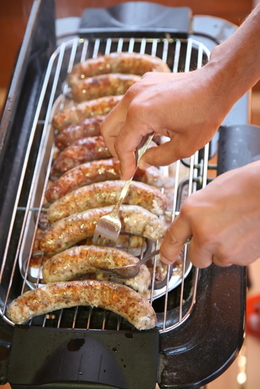 Humans are at the top of the food chain. Because of this, we are generally not exposed to a single toxin at a time, but to a complex mixture of toxins. This includes pesticides and other environmental chemicals from multiple sources: animals and what they've consumed, plants and their exposure to chemicals, as well as our direct contact with contaminants in the soil, water, and air. It is largely unknown how these multiple toxins interact with one another and where the threshold for simultaneous exposures or cumulative effects might be.
Humans are at the top of the food chain. Because of this, we are generally not exposed to a single toxin at a time, but to a complex mixture of toxins. This includes pesticides and other environmental chemicals from multiple sources: animals and what they've consumed, plants and their exposure to chemicals, as well as our direct contact with contaminants in the soil, water, and air. It is largely unknown how these multiple toxins interact with one another and where the threshold for simultaneous exposures or cumulative effects might be.
How an individual's body handles exposure to toxins determines the health of the body. Excess toxins may make it difficult for the body to properly carry out essential functions.
Fortunately our bodies are equipped with a detoxification system designed to manage toxins and help maintain health when exposed to harmful substances. This system converts toxic substances to nontoxic substances and excretes them, primarily in the intestines, the liver, and the kidneys (although many other tissues are involved).
Toxicity occurs when the detoxification system becomes overloaded with more toxins than can be eliminated. There are many signs that the body's natural detoxification system may be overloaded; these signs include headaches, fatigue, muscle pain, skin rashes, and digestive problems.
For centuries, many cultures have promoted detoxification for healing and religious purposes. In today's culture, this concept may also be a matter of necessity. Because of the daily bombardment from an increasing number of toxins in our external environment (including additives, preservatives, and artificial ingredients in processed foods), our detoxification system's capacity to handle these toxins may be surpassed.
Minimizing exposure to toxins is important, but equally, if not more important, is the role diet plays in combating toxicity. Nutrients can provide information and materials to the detoxification system so it functions optimally. By making dietary and lifestyle changes, you can not only decrease toxic load, but also increase the ability of the body to clear toxins.
How you can feed your detoxification system
You can increase the ability of your body to convert toxins to non-toxic substances and to eliminate toxins by doing the following:
- Drink extra water.
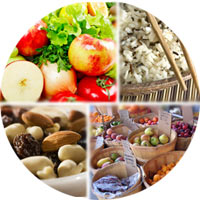 Consume a balanced diet of whole foods, colorful fruits and vegetables, such as broccoli, squash, blueberries, citrus, beets, dandelion greens, artichokes, pomegranate, and carrots. These foods are filled with phytonutrients and have been shown to boost detoxification.
Consume a balanced diet of whole foods, colorful fruits and vegetables, such as broccoli, squash, blueberries, citrus, beets, dandelion greens, artichokes, pomegranate, and carrots. These foods are filled with phytonutrients and have been shown to boost detoxification. - Eat celery-an "unassuming" but powerful detoxifying food that provides phytonutrients that benefit the liver's ability to detoxify.
- Include the following foods containing antioxidants (vitamin A, vitamin C, vitamin E, and selenium): beets, broccoli, asparagus, swiss chard, kale, peaches, red peppers, papayas, parsley, carrots, apricots, alfalfa, avocados, cantaloupe, and green leafy vegetables. Antioxidants are necessary for neutralizing free radicals.
- Add whole grains, such as brown rice, quinoa, and oats to aid elimination.
- Add legumes, such as black beans, white beans, chickpeas, and lentils as soluble fiber to aid in elimination.
- Increase protein intake from sources like soy, eggs, nuts, and seeds. Also choose lean grass-fed beef and free-range, natural poultry. Protein is essential to the second phase of detoxification, during which protein in the liver attaches to molecules the body is getting rid of and escorts them out of the body.
- Include adequate B-vitamins from whole grains, nuts, seeds, and seafood. B-vitamins are needed for the initiation of the detoxification system.
- Include probiotics (i.e. acidophilus) to promote gut health.
Tips for detoxification
Foods that add toxic load
Foods to avoid or minimize as they add to the toxic load or burden of the detoxification system.
- Avoid processed foods containing additives and preservatives
- Avoid artificial sweeteners and corn syrup
- Avoid hydrogenated vegetable oil
- Minimize red meats, sugar salt, caffeine, and nicotine.
- Reduce refined or non-whole grain products
- Reduce alcohol consumption
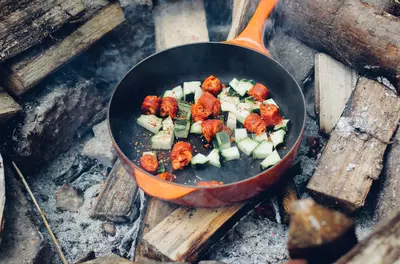
Cooking
Cook foods in as little water and for as short a period of time as possible to preserve all water soluble vitamins (Bs and C).
Crops (1950 to 1999). Journal of the American College of Nutrition, 23(6), 669-682.
Davis, D. et al. (2004). Changes in the USDA Food Composition Data for 43 Garden Crops, 1950 to 1990. Journal of the American College of Nutrition. 23:6: 669-82.
EPA's Report on Environmental Pollution and Disease.
Halweil, B. (2007). Still No Free Lunch: Nutrient Content of U.S. Food Suffers at Hands of High Yields. Foster, RI: Organic Center.
Kale, A., Gawande, S., Kotwai, S. (2008). Cancer phototherapeutics: role for flavonoids at the cellular level. Phototherapeutic Research, 22(95), 567-577.
Mayer, A. (1997). Historical changes in the mineral content of fruits and vegetables. British Food Journal, 99, 207-211.
Meeran, S.M., Katiyar, S.K. (2008). Cell cycle control as a basis for cancer chemoprevention through dietary agents. Front Bioscience (NIH public access), 13, 2191-2202.
Percival, M. (1997). Phytonutrients and Detoxification. Clinical Nutrition Insights, 5(92), 1-4.
Pollan, Michael (2006). The Omnivore's Dilemma. New York, NY: Penguin Press.
Robbins, J., Ornish, D. (2001). The Food Revolution: How Your Diet Can Help Save Your Life and Our World. Berkely, CA: Conari Press.
Soto, A., Maffini, M., Schaeberle, C., Sonnenschein, C. (2006). Strengths and weaknesses of in vitro assays for estrogenic and androgenic activity. Best Practice & Research Clinical Endocrinology & Metabolism, 20(1), 15-33.
The Genes and Environment Initiative, National Institutes of Health.
Worthington, V. (2001). Nutritional quality of organic versus conventional fruits, vegetables and grains. The Journal of Alternative and Complementary Medicine, 7(2), 161-173.
United States Department of Agriculture (1950). Composition of Foods. USDA Agriculture Handbook, 8. Washington, DC.
United States Department of Agriculture, Agricultural Research Service (2007). USDA National Nutrient Database for Standard Reference, Release 20. Nutrient Data Laboratory Home Page.
